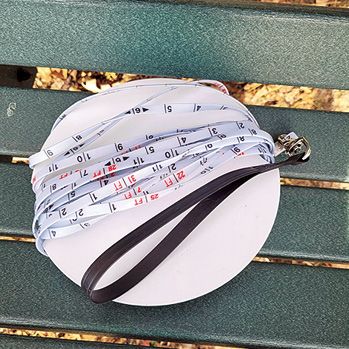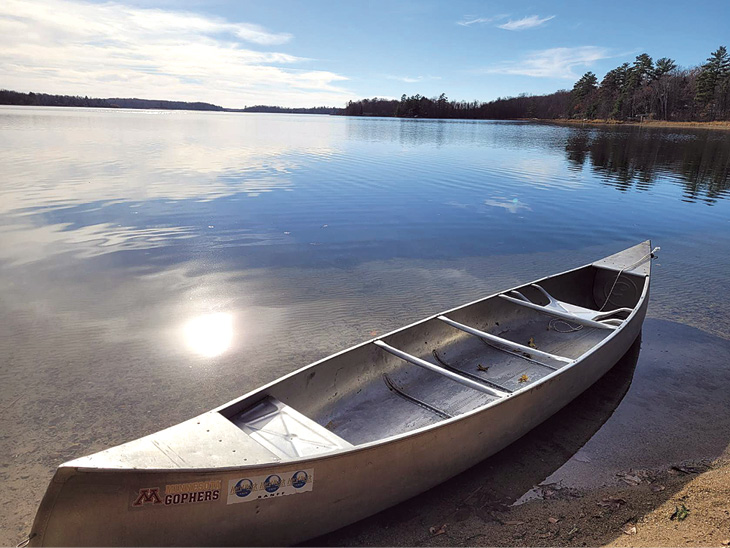Because scientists can’t be everywhere, they depend on volunteers. The Minnesota Pollution Control Agency has used citizen scientists for more than 50 years. For some bodies of water, volunteer monitoring provides the only data available, making this work indispensable.
“No experience is required. So literally anyone can join the program,” Waverly Reibel said. Reibel is the volunteer water monitoring program specialist for the Minnesota Pollution Control Agency (MPCA).
The MPCA offers volunteers basic equipment and online training. According to her, retirees, outdoor enthusiasts, and various community groups are the program’s most frequent volunteers.
“A lot of high schoolers love to do the stream monitoring program; they can get extra credit opportunities in school, so really anyone can do it. Volunteers measure water clarity or transparency. That’s kind of like taking the blood pressure of the water body,” Reibel said.
This aids scientists in monitoring water body health by estimating algae and sediment levels, crucial for maintaining optimal conditions. Excessive algae or sediment can disrupt light penetration, harming aquatic life and recreational activities.
The impetus of the water monitoring program originated from a 1963 spill in the Minnesota River near Mankato, which ultimately feeds into the Mississippi River.
“With the amount of water we have to monitor in the state, it is impossible without these dedicated citizen scientists,” said Mike Kennedy, watershed project manager for the MPCA at NE Regional Office. “Their local knowledge and contributions help us understand the water systems in their yard much better.”
Beth LaVigne lives in eastern Duluth and usually walks near a creek. In 2010, she started volunteering as a water monitor with the MPCA. “The sampling itself is really very easy to do in about five minutes,” she says.
LaVigne is a former Duluth high school teacher. Now she teaches students who are majoring in elementary or secondary education at the College of St. Scholastica. Still, she says you don’t need an education to volunteer. “I began (water monitoring) as an example to practice what I preach to my students,” she said of her motivation.

For those who haven’t completed high school, she says, “Chances are if they live near a creek, they have come to know it and love it, and if they’re walking by that area anyway, there are easy things to do to contribute data to try to keep those areas beautiful.”
For the past decade, Bruce and Shirley Tode have been monitoring West Twin Lake, also known as Bass Lake by the DNR. Bruce has frequented the area since 1954, fishing Lake Vermilion for 69 years. The couple’s interest in water monitoring was piqued when they observed excessive algae growth one year.
“Here’s all this algae, which we never had before,” Bruce said of an event 10 years ago. “I think ‘that’s our water source for our drinking water,’” he added.
That began their journey into water monitoring, armed with nothing but a simple tool called the Secchi disk, affectionately dubbed by them as “the white disk.” This disk is supplied by the MNPC. Their method is simple yet effective: They drop the disk into the lake’s depths, gauging clarity and depth with each measurement.
Sometimes, their adult sons in their 50s, grandchildren, and neighbor children help them with the monitoring. “We just love our lake,” Shirley said.
Headed to the Boundary Waters?
“MPCA staff can’t get there as much, so it’s great to have more Boundary Waters volunteers,” said Reibel. As you paddle through the lakes you stop and take a Secchi clarity reading. It’s not at any specific site on the lake. The MPCA will provide everything for it, like waterproof data cards to draw a little map of the lake you’re on, where you took the reading, and what the reading is. Then you send it all back in the postage-paid envelope.
If you’re interested in learning more, please call or email Waverly Reibel at 651-757-2110, waverly.reibel@state.mn.us. Or visit the website: pca.state.mn.us.
MPCA Volunteer Monitoring Program Fast Facts
- 1,104 lake and stream volunteers
- 717 lakes monitored
- 530 streams monitored
- Data used to determine water quality trends
In Minnesota:
- More than 12,000 lakes
- 92,000 miles of streams
These are tubes that volunteer water monitoring program specialist Waverly Reibel sent to volunteers in mid-April. | MPCA
Monitoring Crayfish in the BWCAW
Many agencies welcome citizen scientists. In Cook County, Amanda Weberg, aquatic invasive species program supervisor with the Cook County Soil and Conservation District, is looking for volunteers visiting the Boundary Waters to help monitor rusty crayfish.
Rusty crayfish are an invasive species in Minnesota. They are native to the Ohio River Valley and are larger than our native crayfish. “They kind of bully the native crayfish,” Weberg said. “They like to ‘lawn mow’ the native vegetation, and that can be problematic, especially with our wild rice beds.”
They kick the native crayfish out of their homes, and predators like fish and otters can easily find them, but the rusty crayfish are harder for predators to eat.
“Rusty crayfish also impact walleye and trout, swimming, and recreation. If you have your feet in the water, they will pinch your feet,” she said.
Contact Weberg if you are interested in volunteering in this program. You don’t have to live in Cook County. She will send you lightweight mesh equipment and instructions. Contact her at: amanda.weberg@co.cook.mn.us or 218-877-8559.

